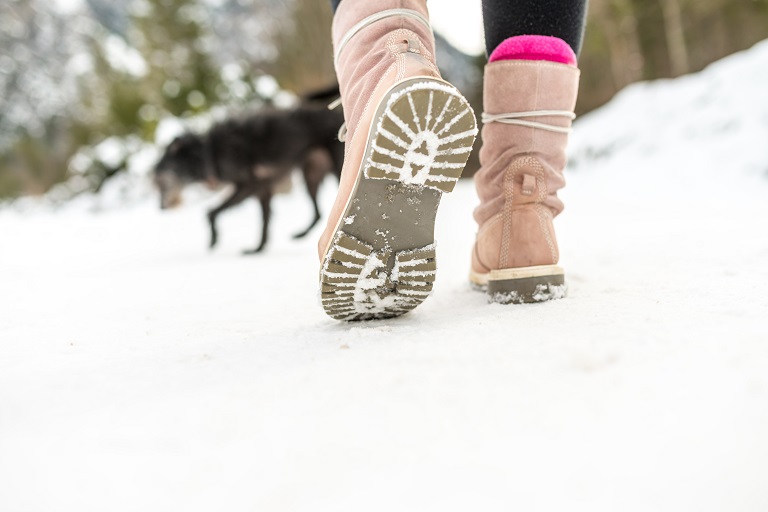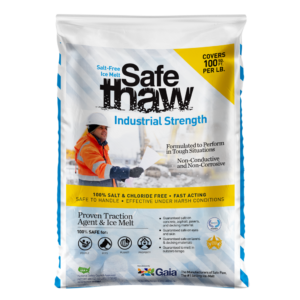Is Sand Really An Economical Option To Get Traction On Ice | Myths Busted

As winter approaches, the roads become more dangerous to drive on. However, there are many myths surrounding ways of making the roads safer during this time of year and how thick is ice safe to walk on. The first and most common myth is that sand creates traction on ice and that sprinkling sand on top of an existing layer of ice will help drivers gain traction when driving over it.
Myth #1: Sand is more effective than Walk On Ice
You’ll find that Walk On Ice is a much better traction solution than sand. Sand is effective on grassy surfaces but not so much on the ice. When it comes to getting traction on ice, Walk On Ice is the best option. Walk On Ice can be used in any weather conditions and will not damage your flooring or decking.
Myth #2: There are no risks associated with using sand.
You may think that sand is the perfect solution to get traction on ice, but there are risks associated with using sand. Many people wonder how thick is ice safe to walk on. Sand can be slippery and soft which makes it difficult to walk in or stand on for long periods.
If you use sand, all shoes and gloves should be off before entering your home or car so that you don’t track any into the house. Sand can get into your eyes and mouth if not careful while walking on it, so always wear sunglasses while outdoors in these conditions. If inhaled by accident through a sneeze or cough, it could cause respiratory problems later down the road like- asthma attacks which may require hospitalization if severe enough.
Myth #3: Sand is an economical way to get traction on ice.
There are a lot of myths about sand and ice safety, but one of the most common is that sand is an economical way to get traction on ice. The truth? It’s quite expensive and can be hard to find in certain areas.
In addition, even when you do find sand for sale, it might not be worth the cost or trouble. Sand has been found to wear down your shoes (even your expensive non-slip ice shoes) or boots rather quickly if you’re walking or running regularly (and this will make them more expensive in the long run). Some people also report that their feet start slipping around inside their shoes or boots when they’re wearing them after walking through a lot of sand—which makes sense: the friction between your foot and shoe will increase as more grains slip out from between them over time!
Looking Closer: Is Sand Really The “Best Sand For Ice Traction”?
Now that we’ve busted the myth of sand being “cheap and effective,” let’s take a deeper look at another big claim—that you just need to find the best sand for ice traction and your problems are solved. On paper, it sounds logical. Some people swear by using coarse sand or even construction-grade grit because it’s heavier and stays in place longer.
But here’s the catch: even the “best” sand has its limits. For one, sand doesn’t bond with ice—it just sits on top. That means once cars drive over it, or wind blows across your driveway, you’re back to square one. Another issue? Sand can sink into soft snow or slush, leaving the slick ice layer underneath untouched. At that point, you might as well be walking on glass.
So yes, sand can provide a temporary layer of grit, but it’s far from a guaranteed fix.
The Pros And Cons Of Using Sand On Roads
Municipalities sometimes dump truckloads of sand across highways and city roads in the winter. And while that looks reassuring, let’s break down the pros and cons of using sand on roads.
Pros:
- Adds some grit to the surface, especially when mixed with salt.
- Can help vehicles gain traction during sudden snowfalls.
- Readily available in bulk for city operations.
Cons:
- Sand does not melt ice—it only masks the problem.
- It washes into drains and waterways, creating serious environmental concerns.
- Over time, it clogs storm sewers and increases spring cleanup costs.
- It’s less effective on black ice, where particles scatter quickly.
So while sand may look like an “economical” choice, the hidden costs (environmental damage, cleanup expenses, and reduced effectiveness) often outweigh the benefits.
Sand For Ice Traction: Homeowners Beware
When it comes to sand for ice traction on sidewalks, driveways, or steps, the story isn’t much different. You might get a little more grip under your boots for a few minutes, but as soon as the ice shifts, melts slightly, or refreezes, the sand slides out of place. Worse, it can be tracked inside your home, scratching hardwood floors and wearing down carpets.
And here’s another often-overlooked drawback: sand can grind into the ice surface, creating sharp, uneven spots. That means once temperatures rise and the ice begins to melt, you’re left with a lumpy, gritty mess that’s harder to shovel or sweep away.
In comparison, traction agents like Walk On Ice don’t just sit loosely on top. They’re designed to grip into the ice itself, creating what’s often called the “sandpaper effect”—stable, long-lasting traction without the mess or long-term drawbacks.
Sand For Snow And Ice: A Short-Term Fix
When you’re desperate, tossing sand for snow and ice onto your steps or driveway can feel like a lifesaver. And to be fair, it does work in the very short term. That’s why so many people keep a bucket of sand in the garage for quick fixes.
But let’s ask the bigger question: do you really want to keep reapplying handful after handful of sand every time you step outside? Because that’s the reality. Unlike products designed for icy conditions, sand won’t hold up under repeated foot traffic, car tires, or melting and refreezing cycles.
For occasional, emergency use? Sure, sand has its place. But for everyday winter safety, especially if you’re worried about how thick is ice safe to walk on or how to keep your driveway consistently safe, it’s far from the ideal option.
Where Sand Falls Short, Walk On Ice Steps In
This brings us back to the main point: if sand really worked as well as people claim, we wouldn’t still be searching for better solutions. Walk On Ice isn’t just a replacement for sand—it’s designed to address the specific shortcomings sand can’t.
- Instead of scattering away, it locks into the ice.
- Instead of harming the environment, it’s made of 100% natural minerals.
- Instead of leaving you with a cleanup nightmare, it simply provides safe traction until the ice is gone.
And while sand has to be applied liberally and often, Walk On Ice works with a light sprinkling—making it both more efficient and less wasteful in the long run.
Get ready for winter with Walk On Ice instant traction on snow and ice
Conclusion: Smarter Choices For Safer Winters
So, let’s recap. The myth that sand is an “economical” fix for icy conditions just doesn’t hold up under scrutiny. Even the so-called best sand for ice traction is unreliable, messy, and short-lived. Looking at the bigger picture, the pros and cons of using sand on roads show that while it has limited benefits, its drawbacks for the environment and long-term costs far outweigh the good.
For homeowners, relying on sand for ice traction or sand for snow and ice may feel convenient, but it often creates more problems than it solves—tracking grit indoors, damaging surfaces, and requiring constant reapplication.
In contrast, traction agents like Walk On Ice step up where sand falls short. Instant traction, pet- and eco-friendly design, and no messy aftermath make it a more reliable, modern alternative. This winter, instead of filling buckets with sand, consider keeping Walk On Ice close at hand. It’s not just about preventing slips and falls—it’s about choosing a solution that makes sense for your safety, your property, and the environment.
Other Ice Melt Products
Safe Paw
The Original and #1 Selling Pet and Child Safe Ice Melt for over 20 years. Guaranteed environmentally safe – will not harm waterways and sensitive wetlands. All products are made in the USA.

Safe Thaw
Imagine an ice melt you can put down and never worry about. It won’t harm pets, kids, and your property. That’s Safe Thaw. Unlike anything else on the market, Safe Thaw can change how winter affects our planet.



